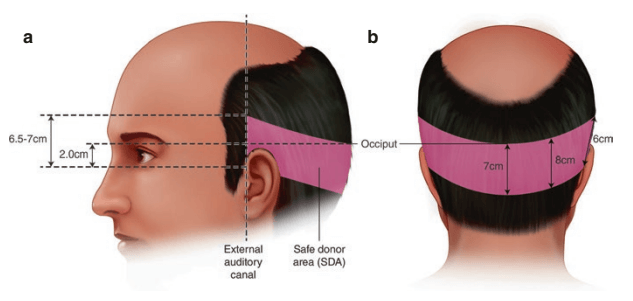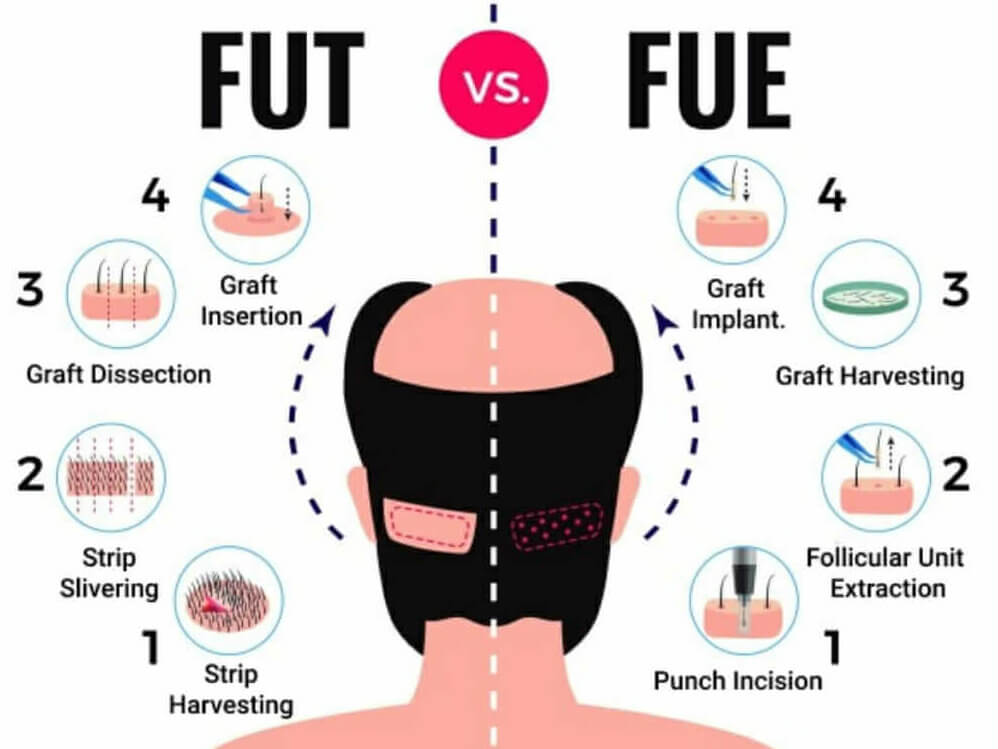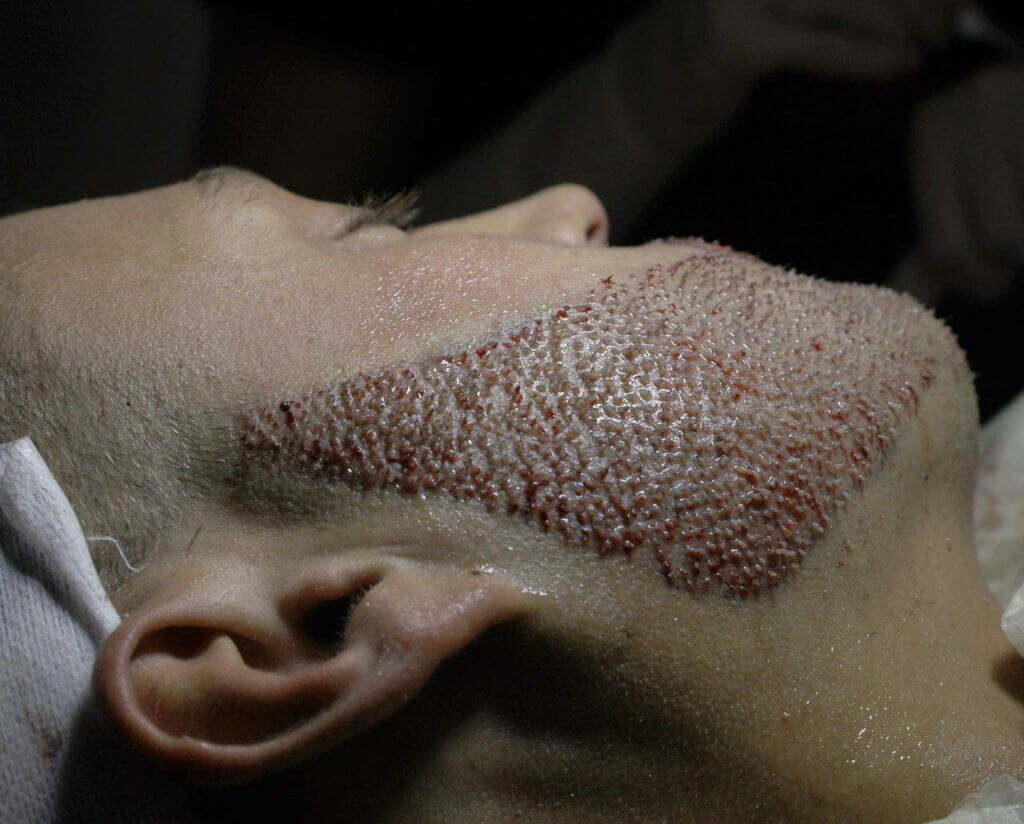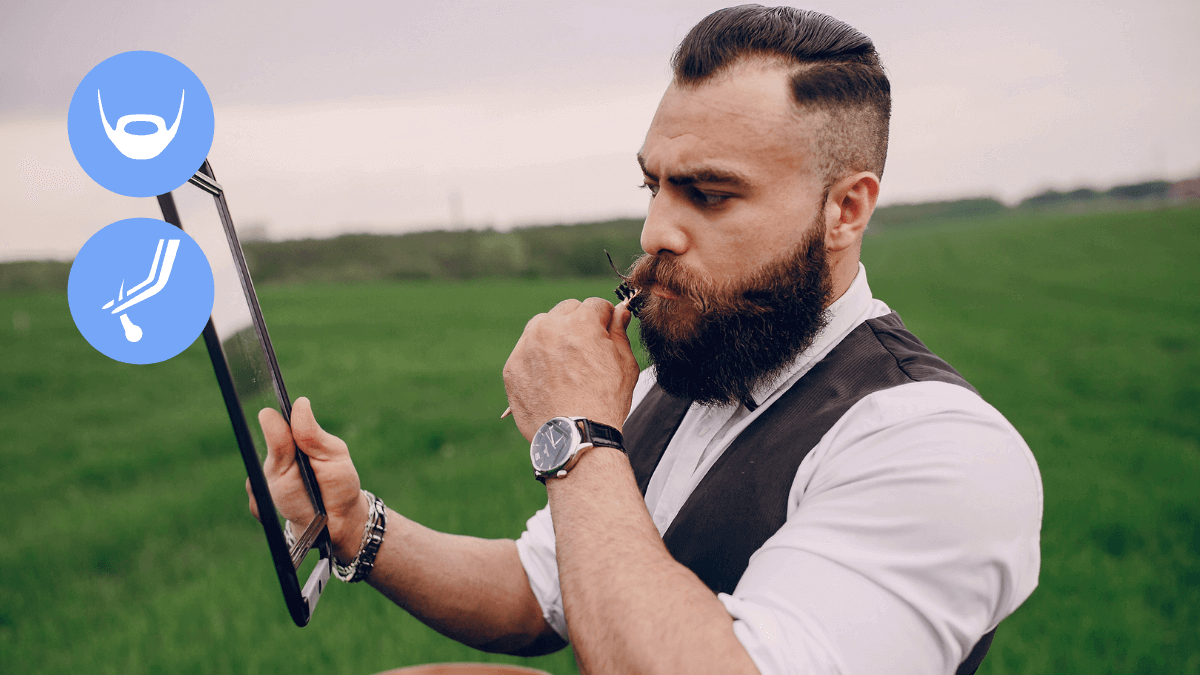It can be a lot harder, and even impossible for some men to grow beards due to genetics.
Or, you might have bald patches/general thinning in your beard due to a medical condition such as a scarring alopecia, infections, or burn wounds.
Regardless of your condition that left you looking for a treatment to effectively grow/regrow facial hair, a beard transplant is possibly the most efficient method.
But, it’s crucial to know more about your options ahead in this path, exact steps and procedures you’re going to go through, and everything else you need to be aware of.
TL;DR
➡ A beard hair transplant is just like an ordinary hair transplant, but the recipient area is for a beard this time. In terms of their process, the technique is the same.
➡ Unless an external factor is present, your beard transplant is permanent and is immune to balding. And at the hands of an expert, they show no difference than a naturally grown beard.
➡ Beard hair transplants have a famous success rate. Naturally, they contain certain risks. But most of these minor risks are directly connected to your clinic’s experience and your responsibilities.
➡ In Turkey, the average cost for beard hair transplants is somewhere around $2000.
So, in this blog, I’ll cover everything you need to know about beard and facial hair transplants:
Table of Contents
But first, let’s see what exactly we’re talking about here:
What Is a Beard Hair Transplant?
A beard hair transplant is a cosmetic surgery where donor hair grafts harvested from a donor site are implanted into the recipient area which is your desired site for a beard. It is an efficient and a direct solution to permanent types of beard alopecia, burn wounds, infections, or a general lack of beard due to genetics.
FUE is the method preferred and practiced by many clinics for beard hair transplants, but there are clinics that use the FUT technique too.
There are thousands of patients worldwide that go through beard surgeries every year, and countless success stories, as well as a significant number of failures, are available to patients.
But, where did it actually come from?
Background
The modern concept of hair transplantation was invented by Dr. Norman Orentreich in the 1950s.
However, it is unknown who came up or conducted the first beard hair transplant surgery.
But, since it’s not a completely different process from a modern scalp hair transplant, it probably didn’t take too much consideration before applying.
How Long Do Beard Hair Transplants Last?
As long as the harvested grafts are from the site we call the safe donor area, your beard transplant is permanent. It should remain where it’s implanted for the rest of your life.

Do Beard Hair Transplants Look Natural?
In most cases, with the average surgeon at an average clinic your beard hair transplant results will and should look natural.
However, if you go through with the process with an inexperienced surgeon at a clinic that doesn’t have the right equipment, you will possibly have poor end results that might make the situation worse.
And on the other hand, if you go with an expert surgeon in a clinic that uses advanced equipment and techniques such as UnitedCare, you will get much more natural results.
That’s mainly because experience and equipment help surgeons plan a better route, implant hair in correct angles and depth, and make the right calls based on your medical background and skin characteristics.

Why You Might Want a Beard Hair Transplant
So, why should you get a beard hair transplant?
I’m not asking why you should restore your beard. We’ve established that you might not be able to grow a beard or have a medical condition that caused permanent hair loss.
No.
What I’m asking is, out of all the different options for beard regrowth, why beard hair transplants?
The most efficient solution
Beard implants are the most efficient solution to facial hair regrowth, simply because they are direct and aimed.
Other solutions, such as minoxidil or other medications, take time and aren’t guaranteed to work the way you want. Beard implants are.
Firstly, your surgeon carefully plans your facial hair structure, and implants based on that plan. So you’ll get hair at the right place.
And second, beard hair transplants are much more likely to give you the end result you want, as the success rate is close to 99% for top clinics.
It might be the only option you have
And the other main reason is that, you might not have any other option for regrowing your facial hair.
If you have scarring alopecia, a burn wound, or a scarring infection, there are no other methods that can help you regrow facial hair on the bald patches.
In these cases, beard hair transplants are the only option you have.
Beard Hair Transplant Process
A beard implant is very similar to a hair transplant in terms of process and techniques, the only difference being the recipient site.
Also, it’s not uncommon for patients to undergo both scalp and beard hair transplant surgery at the same time to improve overall appearance.
The procedure of a beard hair transplant starts with the first examination:
Examination and Pre-Surgery
First off, you should consult with your picked clinic and surgeon, and see if you’re eligible for a beard implant and what your options are.
You can get a free online consultation from various clinics including UnitedCare, or make an appointment with a local dermatologist.
Once the examination is done and you’re given the green light, you’ll have to wait for the day of the surgery.
**
When the day of the surgery comes, you will show up to the clinic and your surgeon will walk you through the process first, tell you everything you need to know regarding the operation and what will follow.
Once that’s done, with the heavy assistance of the surgeon, you will decide on how you want your end results to look like. The staff will draw your new beard’s details and apply local anesthesia to the donor area and around your jaw and mouth.
Harvesting
Now, harvesting can differ based on the hair transplant method your surgeon practices:
FUT
In a FUT surgery, the surgeon will cut a tissue full of hair grafts from the safe donor area first.
Then, individual hair follicles from this tissue will be harvested and stored in a proper liquid before use.
I strongly advise against FUT, as there will be a visible, permanent scar where the tissue was extracted and you might need a FUE surgery after all to cover it up.
FUE
In a FUE surgery, on the other hand, the surgeon will use a punching tool with a diameter of 0.7mm-1.1mm to extract individual hair follicles from the donor area.
Once harvested enough grafts that are also stored in a proper liquid, your surgeon will move on to the implantation part:

Implantation
If your clinic practices the DHI technique, they’ll use an implanter pen that makes the life of your surgeon much easier and gives them more control to plant the hair follicles into your beard in a single motion.
If not, the surgeon will use scalpels to make incisions around your beard, and after that will use forceps to plant the hair graft into this incision.
Once all the grafts are planted according to the planned structure, you’ll be good to go.
Post-Surgery
Right after the surgery, your recovery period will begin.
It will be your responsibility as the patient to make sure you take good care of your newly implanted beard hair.
You should follow the same guidelines as the post hair transplantation recovery to increase your graft survival rate, which will heavily affect the final result that will come in 6-12 months.

Beard Hair Transplant Side Effects
Of course, as it is with any treatment and medication, there are a number of side effects that will come with a beard hair transplant.
Here is a full list of what you should expect:
▶ Infections (very low probability, around 1%)
▶ Scabs and crust around the recipient site.
▶ Bleeding around donor and recipient areas
▶ Itching around the recipient site
▶ Swelling
▶ Pain and discomfort
▶ Loss of sensation and numbness
▶ Shock loss
▶ Reddish skin
How Much Does a Beard Hair Transplant Cost?
The cost of a beard transplant can change drastically based on your location and the technique you want to use. For example, in the US, the prices vary between $3000 and $15,000 while in Turkey the average cost is somewhere around $2000.
In the United Kingdom, most clinics offer a price between $3800 and $10,500 for a beard implant.
In Europe, the prices for beard hair transplants are usually somewhere between $2500-$10,000.
Achieve Your Natural Look:
Beard hair transplants are medical procedures that require expert surgeons knowledgable in the fields of hair and skin.
That’s why we’ve founded UnitedCare clinic as a dermatologist duo with 20 years of combined experience in hair restoration and dermocosmetics.
We believe that every patient should achieve their desired results with the least amount of inconvenience and a top-notch holistic approach.
With advanced techniques and technologies such as DHI, Sapphire FUE, and Bio-Enhanced Hair Transplants, UnitedCare is all for helping our patients restore their desired and natural look.

We’re just a click away 👇
Restore your hairline with a dermatologist.
Ensure the success of your beard hair transplant with advanced FUE surgeries and bio enhancements:
Frequently Asked Questions (FAQs)
How painful is a beard transplant?
The surgical procedure for a beard transplant is painless as local anesthesia is applied to the donor and recipient sites, and the days following the surgery the pain should be minimal as your surgeon will prescribe pain-killers. Once the initial recovery is over, you shouldn’t feel any pain in both your donor area and beard area.
Can hair transplant grow beard?
Yes. Beard hair transplants are widely-practiced and efficient surgeries that are a decent solution for patients who can’t grow beard. The newly implanted beard hair from the surgery will stay on your face and keep growing, just like your natural facial hair.
Can I shave after a beard transplant?
You can shave once the initial recovery is completed, which shouldn’t take more than 10-14 days. But, during and after shaving, you should be extremely careful and treat your facial hair gently using the least amount of chemical products as possible.

